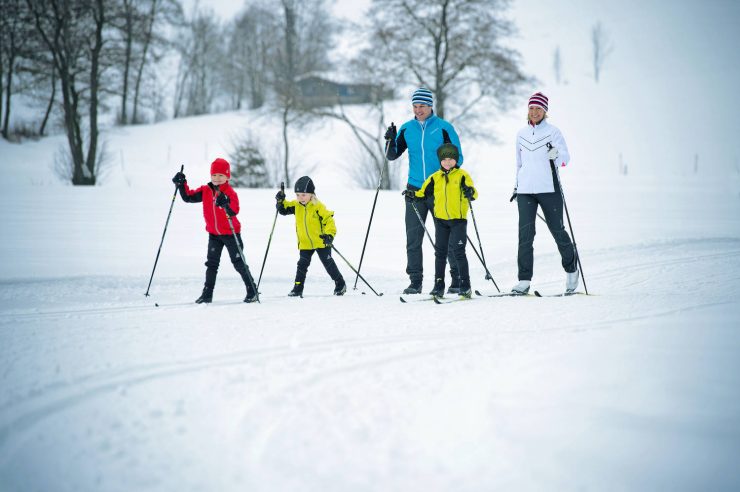Starting With Skiing: Tips and Tricks for Beginners in Cross-Country Skiing
Back in the day, the places in the world located in the northern hemisphere have always considered snow as a huge hindrance when it comes to travel and transportation. The accumulation of snow on the ground and along the mountain paths thickens as the winter season goes by and it becomes almost impossible to traverse the terrain on foot or on horseback. Luckily, the invention of skis brought along a new era for transportation. With the use of skis, people were able to glide along the surface of the snow without sinking in it and it was also used in making new models of transportation such as carts and carriages fitted with skis instead of the traditional wheel. This new invention has helped shape the lives of the people living in snowy regions for the better.

Today, skiing is considered more of a recreational activity or a sport, rather than a mode of transportation. Although some people in rural areas still resort to this as their main mode of transport since it is cost-effective, not relying on fuel or other energy sources but simply on human locomotion alone. Cross-country skiing is the term used to refer to the type of skiing relying only on human locomotion, without the aid of vehicles or machines. It also uses two poles, one on each hand, to push forward and guide the direction of movement.
Skiing is fun yet immensely tiring activity and you need a lot of endurance and stamina to last longer and enjoy the whole activity. For beginner skiers, they need to know these tips so that they can fully enjoy and appreciate this sport.
1. Prepare the right gear
Preparing the right clothes and equipment is the first step when you want to start skiing. Skiing is a sport that really needs a lot of preparation because of the cold terrain. There are clothes that are specifically designed for skiing because regular clothes made out of soft fibers such as cotton absorbs moisture quickly and does not dry at all in the cold, and this can cause you to succumb to the cold in an instant. Always choose clothes that are specifically made for skiing. The skiing equipment consists of your skis, poles, and boots. The equipment can be rented at certain skiing resorts, but it is always safer to bring your own equipment so that you can be sure that they are in good condition. Finally, make sure to cover up under several layers of clothing since the snowy weather’s freezing temperature will still pierce your skin under one layer of clothing.
2. Train your lower body strength
Before trying out skiing for the first time, you need to know that this takes a lot of endurance and balance to stay on your skis for a long time. Lower body strength is important for maintaining balance and absorbing impacts when skiing. The muscles around the knees and the ankles take most of the impact felt by the body during skiing, and that is why it is necessary to strengthen the muscle groups around this area. The main motion for cross-country skiing is kicking with your toes and gliding along the path. The proper transfer of weight allows you to propel yourself forward and gives extra strength to your kicks. Lower body strengthening helps you prepare better for this sport.
When training your lower body, you can perform different exercises such as squats, jumping jacks, lunges, and many more. You can also try different gym equipment designated for lower body strengthening. When training for cross country skiing, using elliptical machines can be really helpful to strengthen your legs and improve your balance. The motions of this equipment perfectly imitate the gliding motion done during skiing. Practicing with this equipment will surely help you get the correct transition of body weight from one foot to another.
3. Practice different styles of cross-country skiing
In cross-country skiing, there are different styles or forms of skiing that beginners need to try. These are the classic style and the skate skiing style. The classic style of cross-country skiing is usually done on trails with tracks. The classic style also has different methods of gliding such as the diagonal stride where the poles are planted in the snow alternatively with the foot pressing forward for gliding. This motion is somewhat similar to walking and it is first taught to beginners with little-to-no-experience. The double-pole stride, on the other hand, uses both poles whether you are striding forward with your left or right foot. For uphill skiing, the side-step method is used wherein the skis are pushed perpendicular to the line of ascent.
For the skate skiing style, this can be visualized as the motion of ice skaters, where the skis are pushed away alternatively at an angle away from each other. This type of skiing is used for speed on smooth and firm surfaces. Practicing different styles of skiing depends on the terrain and it helps you get better at maintaining your balance and coordination with your skis and your poles.
Skiing is a great sport to enjoy the wintery outdoors. It takes a lot out of you but it is very fulfilling once you have learned to traverse the snowy landscapes. Preparing the right gear, training your lower body and a lot of practice can help you become better in this sport.



